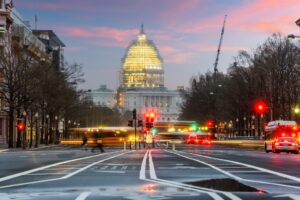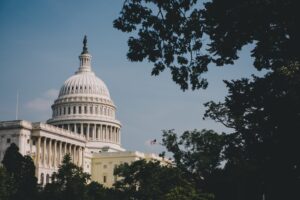A Crisis That Doesn’t Scream
The biggest crisis in America right now isn’t explosive — it’s invisible.
It doesn’t come with alarms or breaking news banners. It builds slowly, behind closed doors and within kitchen-table conversations. It’s a mother rationing asthma medication to keep the lights on. A teacher working two jobs while housing vouchers are slashed. A retired worker watching food prices climb while their fixed income stays exactly that — fixed.
This is the quiet crisis of 2025.
And while media cycles churn and politics rage on the surface, the real emergency is happening beneath: where everyday people are breaking under the weight of systems no longer designed to hold them.
What We Know: The Warning Signs Are Already Flashing
The crisis isn’t theoretical. It’s visible in data, in headlines, in your neighbors’ lives:
Housing is unsustainably expensive
- Rental prices remain 20–30% higher than pre-pandemic norms.
- Eviction filings are rising, particularly in cities that let tenant protections expire.
- First-time homebuyers are shut out, even with good credit, due to mortgage rate volatility and low inventory.
Food insecurity is growing
- The expiration of expanded SNAP benefits left millions with less support, even as grocery prices remain high.
- Food pantries are seeing record demand — often from employed families.
Auto debt and repossessions are peaking
- Nearly 2.1 million vehicles are projected to be repossessed this year.
- People can’t refinance due to high rates, and yet can’t live without a car to work, commute, or care for their family.
Credit dependence is masking the crisis
- Credit card debt has reached all-time highs, especially among households earning less than $60,000/year.
- Defaults are rising — quietly — while financial institutions downplay risk.
Healthcare is back to being unaffordable
- With no federal expansion, millions lost Medicaid or remain underinsured.
- Essential medications like insulin, inhalers, and mental health prescriptions are being skipped again — not by choice, but by necessity.
Where We’re Headed if Nothing Changes
The trajectory isn’t just economic. It’s social, institutional, and potentially destabilizing.
Medicaid restructuring and benefit cliffs
- Proposed changes to block grants and eligibility will cut off access to millions right as need surges.
- Work requirements may return, further pushing low-wage, unstable workers out of eligibility.
Student loan pressure returns
- The forgiveness conversation is over. The repayment burden is back.
- Default rates are expected to quietly rise — again disproportionately among borrowers of color and those without degrees.
Public education defunding
- State-level “culture war” laws distract from budget shortfalls and staffing crises.
- More schools are closing, especially in rural and underserved communities.
- Vouchers redirect funding to private and religious institutions, leaving public systems hollowed out.
Energy poverty
- Utility shut-offs are climbing post-pandemic, especially in red states with fewer protections.
- Climate-driven heatwaves and cold spells will hit hardest for those who can’t afford reliable energy or insulation.
Worse-Case Scenarios: A Fragile Country’s Flashpoints
If ignored, this quiet crisis can turn loud — fast.
- A student debt collapse, with mass defaults and garnishments targeting already fragile households
- A healthcare mortality spike among those denied Medicaid or priced out of care
- Climate displacement in areas facing fires, floods, or water shortages, with no federal housing infrastructure
- Civil unrest over housing, wages, or policing in already strained communities
- Retrenchment of democratic institutions via voting restrictions and misinformation, fueled by public disillusionment
Why It’s Happening: A Crisis by Design, Not Accident
None of this is inevitable. But it is the product of political will — or the lack of it.
- Decades of deregulation and tax cuts for the wealthy hollowed out the public sector.
- “Efficiency” has replaced equity in policy discussions.
- Culture wars have distracted voters from material collapse.
- Voters are kept uninformed, exhausted, and ashamed, so they don’t demand better.
The motive isn’t always malicious — but the neglect is deliberate. The people suffering the most are those least likely to be heard.
What Gives Us Hope (If We Listen and Act)
There are cracks in the silence — and through them, real change could emerge.
- Labor organizing is rising, especially among retail, fast food, and gig workers.
- Tenant unions are growing in power, resisting evictions and predatory landlords.
- Mutual aid networks are keeping families fed and housed where the state has failed.
- Local governments in progressive cities are piloting cash assistance, housing-first models, and eviction protections.
- A generation of voters is waking up to who benefits from the system—and who pays for it.
Hope lies in naming the quiet crisis out loud, and demanding the policies and protections we were told to stop believing in.
The Crisis Is Already Here—It’s Time to Stop Whispering
America isn’t “on the brink.” For many, the fall already happened. They just landed in silence.
We’re living through a structural unraveling that doesn’t make noise — unless we give it voice.
So say it clearly:
- Budgeting isn’t enough.
- Hard work isn’t enough.
- The system isn’t broken. It’s doing exactly what it was redesigned to do — and leaving millions behind.
But there’s still time to resist it. To reimagine it.
To shine light where the silence lives.
Because the longer we let this crisis whisper, the louder its consequences will eventually scream.







